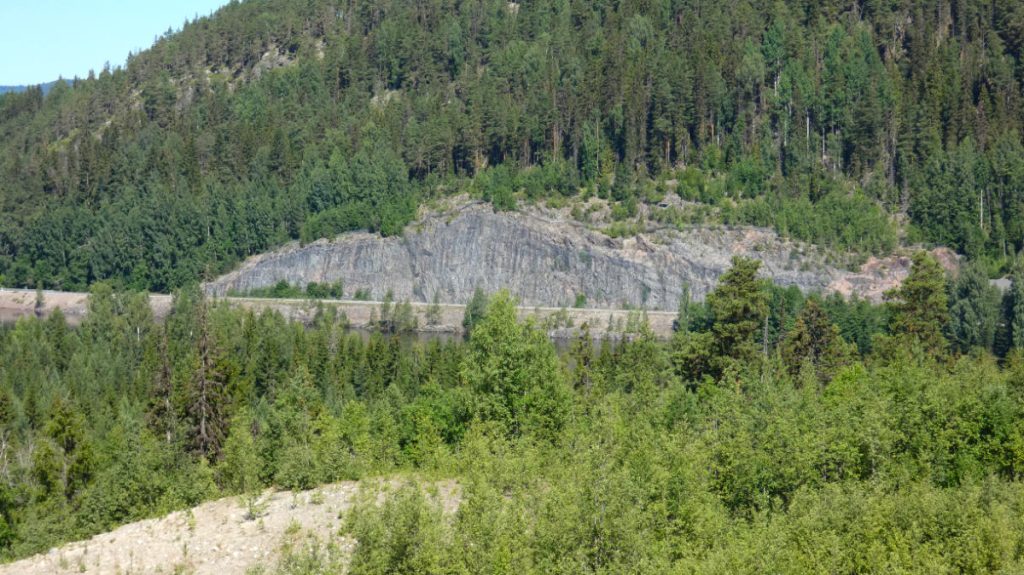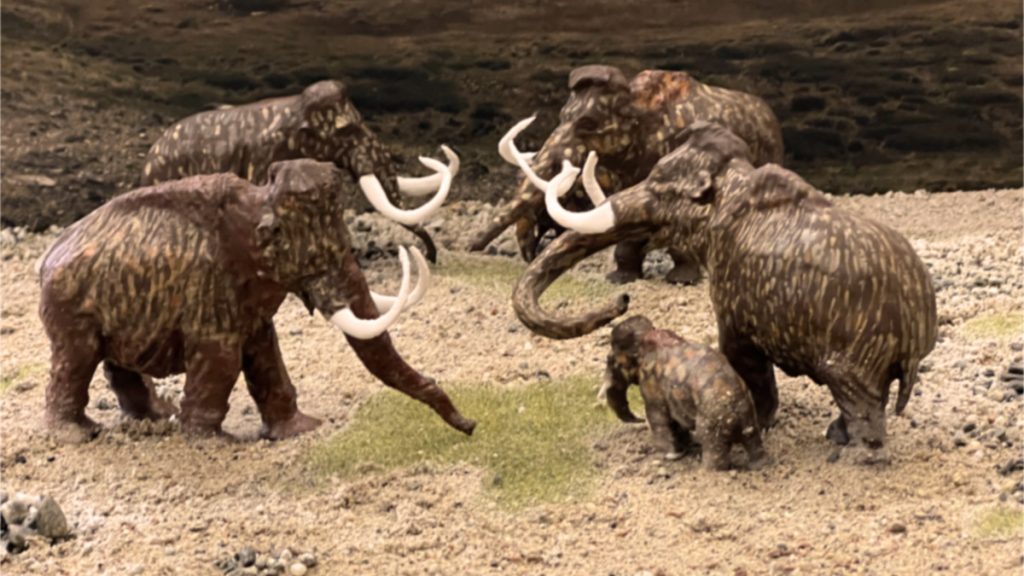Kånkback
Finding-place of a mammoth´s tooth
Some 40,000 years ago, mammoths roamed over this area. This we know since in 1975 a mammoth’s tooth was found in the gravel pit in Kånkback, and using the carbon-14 dating method the age of the tooth has been determined. The tooth is the best preserved in Sweden and on display at the museum Jamtli in Östersund.
Large elephant with a thick fur
At the time when the mammoths lived there was still an ice age in Sweden, but the ice was gone from Ragunda and the landscape was entirely different. Here was tundra with plenty of grass, bushes and herbs. This was badly needed in view of mammoths being herd animals and an adult needing almost 200 kg of feed every day.
Some 50,000 years ago the climate grew warmer and the ice melted making all of Jämtland becoming free of ice. In due course the ice returned and the mammoths vanished. The last mammoths lived in isolation on an island in northern Siberia. There they became extinct, merely 4,000 years ago. By then they had since long vanished from the rest of Europe.


A gravel pit with layers of soil
In Kånkback there are several layers of soil. The bottom layer is thick and constitutes the actual gravel pit. The layer consists of stones, gravel and sand deposited in a river some 40,000 years ago. This occurred during a period of milder weather when the area was free of ice. It is probable that the ice sheet remained only in the mountain range. Some of the material was formed under tunnels in the ice, or was deposited immediately in front of the ice edge as it retreated. The river brought the material and wore down the particles making them round while the inland ice retreated in the direction of the mountains.

Morain
On top of the pit is a layer of moraine. The moraine consists of material worn down by the inland ice from the bedrock or from older species of rock and thereafter deposited. It is a mixture of rough and fine material, everything from mud particles to boulders.
The moraine has been carried and worn down by the inland ice, which means the particles are often rough in structure. The moraine here lies on top of the layer of sand and gravel brought here 40,000 years ago; it was thus formed later, during the latest glaciation period.

Silt
The uppermost layer consists of silt. The silt particles are very fine and in that easily carried off by wind and water. The silty soil here may have been deposited by the melting water of the inland ice. When the water flowed into the fiord covering the valley, the small particles could sink to the bottom and form the silt layer. The existence of a fiord here was due to the inland ice that had firmly weighted down the landscape.
In dry condition the silt is usually solid. After heavy rain when the ground is saturated with water it may easily become liquid.

Concretions
In the layer of silt you may find compact clods of minerals that resemble petrified bones or turtle shells. These are called concretions and have grown on this site after the end of the most recent ice age.
Concretions are usually formed after that sediment has been buried on the bottom of the sea, but prior to it being transformed into rock. During the transformation mineral is deposited in the water to cement sediment around a core, usually organic. The core may be a leaf, a tooth, piece of shell or a fossil.

Limestone concretions
On this site, the concretions consist of silt rich in lime; they are called fairy stone, in Swedish marleka. The Swedish nickname is built on folklore. It was thought that people could avoid nightmares (mar) by keeping one of these in the bedroom. The mare would be busy playing (leka) with the stone.
Concretions vary in shape, size and hardness. The most common appearances are discs, balls, tubes or grape-like.

More information
Sites to visit on Theme Ice Age
More site photos



Places to visit nearby
Practicalities
Accessibility
See Accessibility.
Activities
Nothing special at the site. See instead Activities in Ragunda.
Eating and drinking
The nearest grocery store, café and eatery are in Hammarstrand. See also Eating and drinking in Ragunda.
Accommodation
Missing on site, but various options are available nearby. See Accommodation in Ragunda.
Getting here
SWEREF 99 TM N: 6 996 826 E: 569 605
WGS84 N: 63,094150° E: 16,378686°



